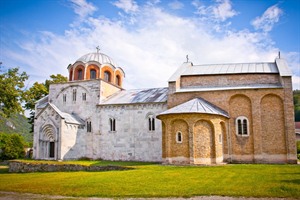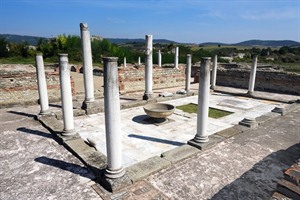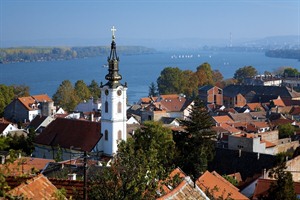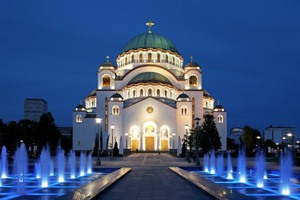- Tick off the highlights of Serbia, Romania and Bulgaria
- Uncover thousands of years fascinating history
- Notice the differences and similarities between the different cultures
- Visit the mighty Balkan metropolis' of Belgrade, Bucharest and Sofia
Discover Serbia, Romania & Bulgaria Group Tour
| 2025 | 2026 |
|---|---|
| 05 Sep - 16 Sep 19 Sep - 30 Sep 03 Oct - 14 Oct 17 Oct - 28 Oct | 28 Mar - 08 Apr 17 Apr - 28 Apr 08 May - 19 May 29 May - 09 Jun 12 Jun - 23 Jun 03 Jul - 14 Jul 24 Jul - 04 Aug 14 Aug - 25 Aug 04 Sep - 15 Sep 18 Sep - 29 Sep 02 Oct - 13 Oct 16 Oct - 27 Oct |
Join our Discover Serbia, Romania & Bulgaria group tour, a guaranteed departure tour departing several times throughout the year.
Begin in Serbia’s lively capital Belgrade and the plains and pretty towns of the Vojvodina region, before heading east into Transylvania, Romania’s famed region known for the legends of Vlad the Impaler and its well preserved Saxon towns. The wide boulevards of Bucharest awaits along with the iconic Bulgarian towns of Veliko Tarnovo, Plovdiv and Sofia.
This tour is a great way for a first time visitor to really uncover the highlights of these three distinctive countries.
This tour operates with a minimum of 1 and a maximum of 24 passengers. These are guaranteed departure tours operated in conjunction with our Balkan partners and are not exclusive to Regent Holidays’ clients. Please note that our local partners reserve the right to change hotels to similar hotels of the same standard. These tours are fully escorted from arrival to departure.
Tour Itinerary
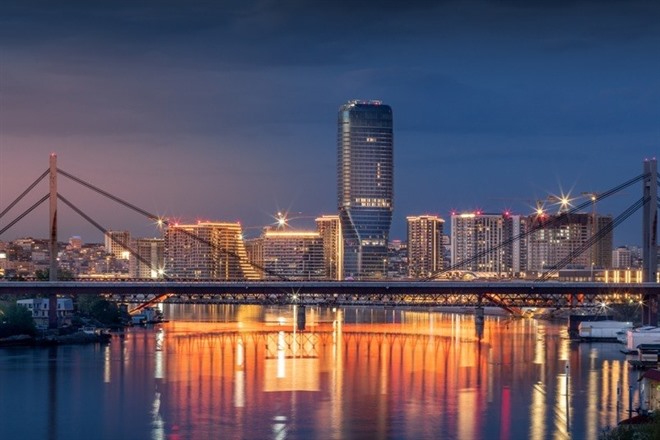
Fly to Belgrade, Serbia's capital. On arrival, meet your transfer driver and head into the city to check-in at your hotel. Along the way, your driver will show you and tell some stories about the Western Gate of Belgrade, the famous Belgrade Arena and the monumental Palace of Serbia. The rest of the evening is at leisure to enjoy Belgrade's gastronomy.
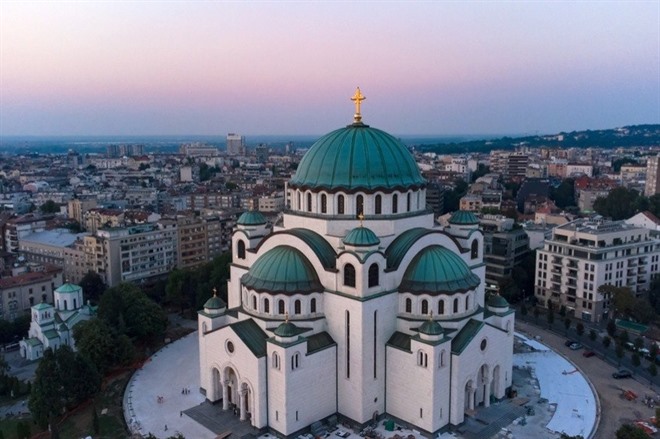
After breakfast, embark on a tour (driving and walking) around Belgrade, a capital city well known for its various architectural styles, dynamic history and fantastic views of one of the biggest river confluences in the whole of Europe. Start the tour with a walk along the lively Knez Mihailo Street, the main pedestrian and shopping zone, before stopping for a visit to the Orthodox Cathedral Church of Saint Michael the Archangel. Your guide will tell you about the tavern around the corner, the oldest in the city and intriguingly known as “?” (Question Mark), before continuing on to Kalemegdan Park and Belgrade Fortress, the most important cultural-historic complex of the city, situated on the confluence of the rivers Sava and Danube.
Head over to New Belgrade to see some great examples of Brutalist architecture. Visit the Museum of Yugoslav History, a memorial complex devoted to the life and deeds of Josip Broz Tito, the political leader of Yugoslavia. Next, you will pass by the stadium of FC Red Star – the former European and World Cup champions, and proceed to the Temple of Saint Sava, Belgrade’s patron saint. Very much a symbol of the city, this impressive building can be seen from any part of the capital. After a short break at the Temple’s plateau, the panoramic tour will then take you from Slavija Square, to Saint Mark’s Church, the Serbian National Parliament and White Palace, and on to Republic Square. This most central point of Belgrade is surrounded by such cultural institutions as the National Theatre and National Museum. (B)
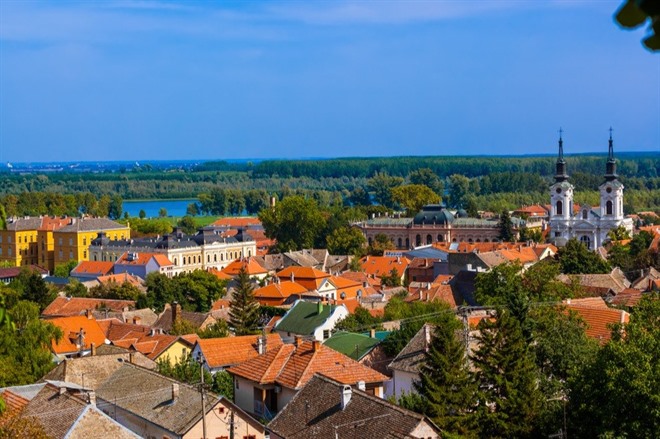
Today explore the most interesting sights of Vojvodina, a province in the north of Serbia.Drive through picturesque scenery and Serbia’s famous wine region towards the ‘Serbian Holy Land’, home to 17 functioning Serbian Orthodox monasteries. Visit the well preserved monastery Krušedol, where you’ll have the opportunity to buy wine and rakija made by the monks. The tour continues on to Sremski Karlovci- a real gem of Serbian culture and spirituality, Sremski Karlovci feels like a ‘museum town’ with its Baroque centre, the Patriarchal Court, the Orthodox Cathedral of Saint Nicholas and the first Serbian secondary school (gymnasium).
Here, enjoy a visit and wine tasting at one the region’s most prominent wineries. Further on the tour, you will visit the 2021 European Capital of Culture, Novi Sad. Located on the historical border of two former empires; the Austro-Hungarian and Ottoman – as a result, the capital of Vojvodina is a multi-cultural city with an interesting mix of architectural influences. On a sightseeing tour around the city, walk around the city’s pedestrian zone, past many interesting buildings, before following the right bank of the Danube to reach the Petrovaradin Fortress, so-called ‘Gibraltar of the Danube'. Drive back to Belgrade for an evening at leisure. (B)
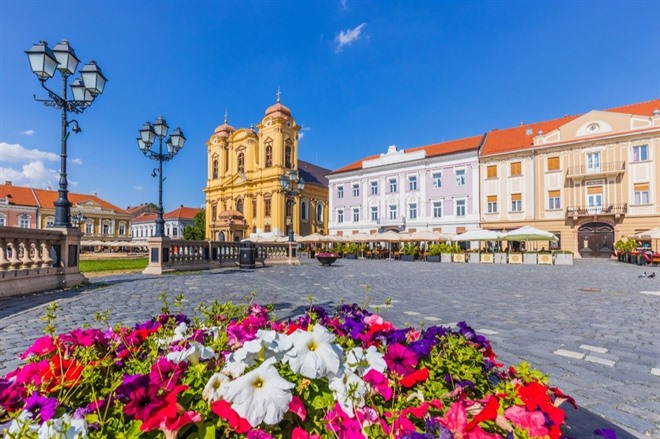
Leave Serbia behind today, bound east for Romania. The tour continues to Timișoara, the largest city in western Romania and one that has been influenced by many cultures. The charm of this city, settled on the northern bank of the River Bega, lies in its distinctive architectural character and vibrant cultural life, and it is frequently referred to as ‘Little Vienna’. Its historical significance is further confirmed by the fact that it was the first European city to have electric street lighting. A guided tour will leave from Unirii Square, the city’s main square surrounded by beautiful mediaeval buildings among which the Catholic Cathedral of Saint George is a decorative highlight. The tour will take you to Liberty Square, Victory Square home to the Romanian National Opera and National Theatre, and the 15th century Corvin Castle (or Hunedoara Castle) which today represents the best example of Gothic architecture in this region.
Continue on to Sibiu. Before the sightseeing tour check-in to the hotel for a short rest. Sibiu was the largest and richest of seven fortified towns built by German settlers in the 12th century. In Sibiu, the first hospital and pharmacy in Romania were established, the first Romanian book was printed and the oldest museum in Romania, the Brukenthal National Museum, was built. The wealth acquired by the trade guilds of Sibiu was used to build impressive buildings and fortification, and today the old town has retained its former splendour. Parts of the mediaeval walls still surround the historic centre, where narrow streets intersect 17th century buildings. Overnight in Sibiu. (B)
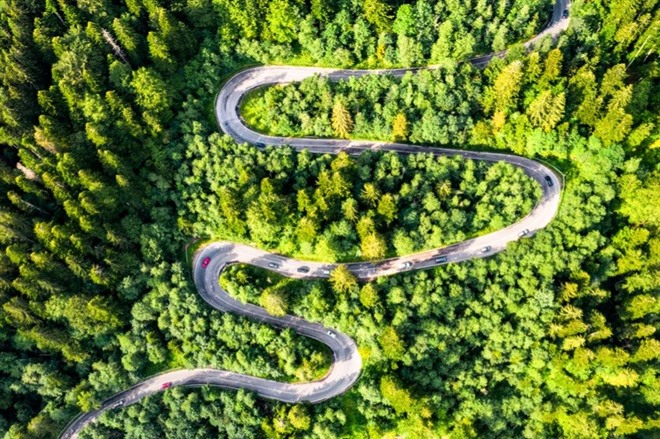
Start your morning with a relaxing coffee on the picturesque cobbled streets before heading through Transylvania. Near Sibiu, explore traditional Romanian villages and the Astra National Museum Complex, Europe's largest open-air museum, which highlights rural life with its historical houses and wooden churches. Drive along the Transfăgărășan, a stunning 90 km route known for its winding turns and breathtaking views. Experience the serene Bâlea Lake by cable car. In the late afternoon, check into your Sinaia hotel for 2 nights. (B).
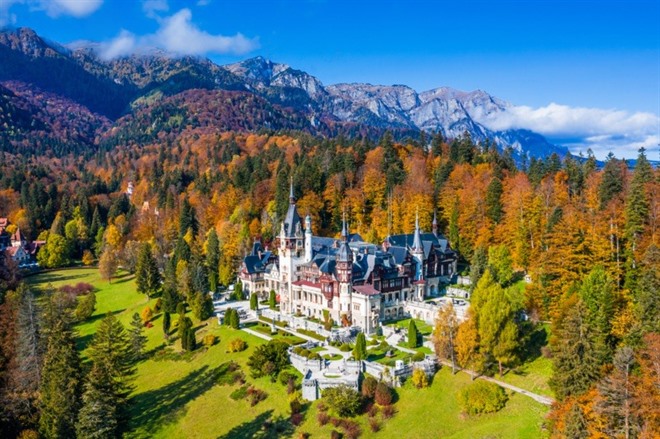
After breakfast, head to Peles Castle. When King Carol I of Romania visited the location on which the beautiful Peles Castle now stands, he was amazed by the stunning scenery of the Carpathian Mountains that surrounded it. The royal family decided to build their summer residence there. The castle, with its stunning turrets, great attention to detail and stunning views of the mountains, is considered a Neo-Renaissance masterpiece. In addition to the magnificent exterior with hand-painted stained glass windows and numerous sculptures surrounding the castle, the interior of over 160 rooms was decorated by more than 400 artisans and artists.
The tour continues to Brasov. Founded by the Teutonic Knights in the 13th century and built as one of the seven walled citadels, this amazing city exudes a distinctive Medieval atmosphere and has been used as a backdrop in many recent films. Numerous mediaeval towers are peppered across the city and between them Baroque buildings and churches jostle for space whilst relaxed cafés line the main square. Start off in the main square and the House of Council before walking down one of the narrowest streets in the world toward the Gothic style cathedral, famously called the Black Church, and further on to Catherine's Gate, the only original city gate to survive from the Medieval period.
Final stop of the day is Bran Castle, the former residence of the Romanian royal family and commonly known as Dracula’s Castle. The fairy-tale appearance of this gothic fortress built in the 13th century, set strategically atop a 60 metre cliff, is a magical sight to behold. Bram Stoker was fascinated by stories of the dark mysteries of the Carpathian Mountains and the legend of Vlad Cepes, a Romanian hero known as a very cruel ruler, and used it all as inspiration for his world-famous novel. Thanks to the fact that Vlad the Impaler was held as a prisoner in this beautiful mediaeval castle, a belief was created that Bran Castle is the place where Stoker placed his story and it became known as Dracula's Castle. (B)
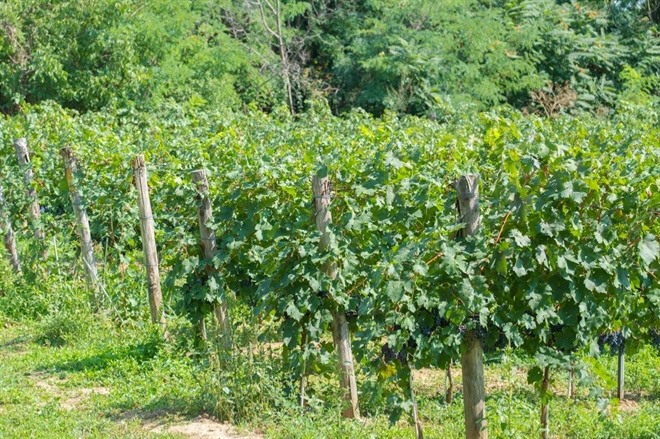
Today set off to Bucharest. En route take a detour to explore Dealu Mare, one of Romania’s premier wine regions. Experience a wine-tasting at a renowned winery amidst the scenic vineyards of Dealu Mare. Your journey concludes in Bucharest, Romania’s vibrant capital. After checking into your hotel for 2 nights, enjoy free time to discover the city’s lively atmosphere. (B)
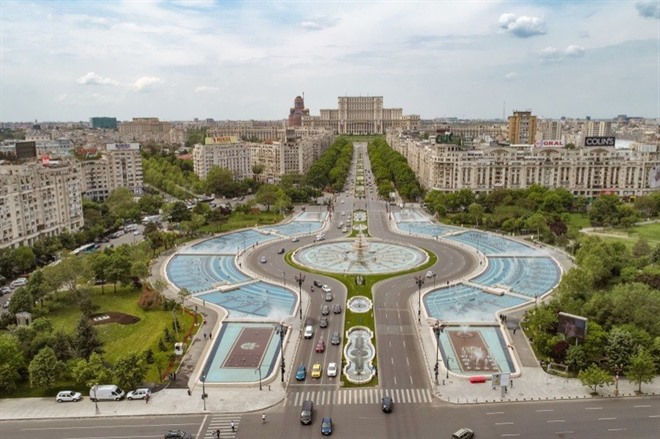
Enjoy a full day in Bucharest today. Known for its wide, tree-lined boulevards, glorious Belle Époque buildings and a reputation for the high life (which in the 1900s earned it the nickname of ‘Little Paris’), today Bucharest is a bustling metropolis. While exploring this magnificent city adorned with parks, you will see the fascinating blend of French, Byzantine and communist architecture Though much of the centre is modern and garish, you will find splendid 17th and 18th century Orthodox churches and graceful art nouveau villas tucked away in quiet corners. You will visit all of the city's best-known sights, including the Piața Unirii for a view of the colossal Palace of the Parliament, the second-largest building in the world (after the Pentagon). From there, the tour continues to the Medieval Old Town, one of Bucharest's earliest settlements, which has been the seat of Romanian princes.
See the Old Princely Court and its church, the peaceful Stavropoleos Monastery, Lipscani Street and the National Museum of Romanian History. Continue toward the Calea Victoriei Avenue, and see the beautiful French-style buildings. When you arrive at Revolution Square, learn what communist rule meant for Romania and how this square earned its name. In the afternoon, use your free time to rest or head to the old city centre and enjoy the open air terraces, cafes and restaurants. This is the perfect place to go out for dinner and enjoy the vibrant atmosphere of Bucharest while sipping Țuică, Romania’s national drink made from plums. (B)
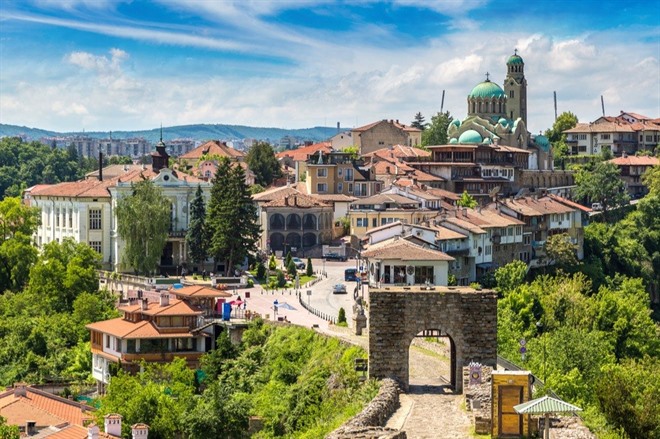
Depart for northern Bulgaria and visit its most important sights.Enjoy a guided walk along the winding cobblestone streets of Veliko Tarnovo, you will learn and feel how its proud population lived under Turkish rule, developed fabulous architectural masterpieces and established a cohesive and powerful craftsmen’s guild.
Continue with a visit to the small village of Arbanasi, a picturesque open-air museum of cultural heritage which includes 80 houses, some of which still have original Ottoman decor and design. If you are lucky you may catch a performance by traditional Bulgarian dancers, with colourful costumes and positive energy. In this small village you can also visit one of its five churches, which together house more than 3,600 frescoes. Check-in to the hotel and free time to enjoy the evening in this charming town. (B)
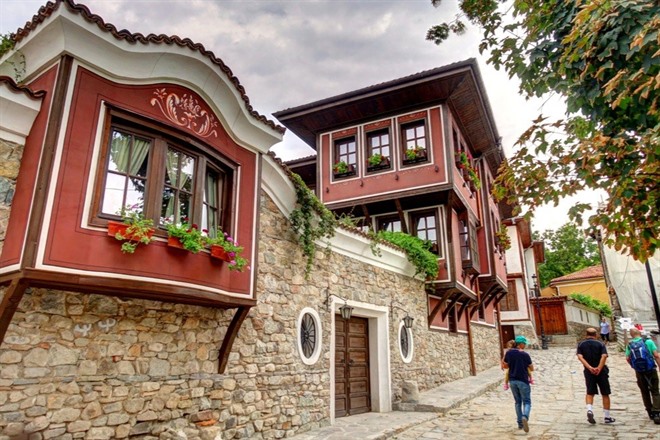
Drive to the open air ethnographic museum 'Etar', which contains a collection of 50 objects including water-powered installations and houses with craftsmen's workshops. The complex exhibits the architecture, way of life and economy of central Bulgaria during the Bulgarian National Revival. Using original instruments and following old traditions, it presents the Bulgarian customs, culture and characteristics of 20 regional crafts.
Continue the tour and explore the beautiful and ancient city of Plovdiv, one of the oldest cities in Europe and the European Capital of Culture for 2019. Located on the banks of the Marica River and built around seven hills, the city has a cultural mix of different civilisations and a unique blend of architectural elements, itself an open-air museum. You will visit one of its most famous landmarks, the architectural complex of Ancient Plovdiv, where many beautiful houses from the time of the Bulgarian Renaissance have been preserved and restored. The most significant monument of the cultural capital of Bulgaria is certainly the Ancient Theatre of Philippopolis; built in the 2nd century with perfect acoustics, in which theatrical performances, concerts and various cultural events are still held today. You will also visit the Roman Stadium and the Church of Saint Constantine and Helena before finishing the tour in Kapana, the creative heart of the city and a pedestrian area full of shops, restaurants and galleries. (B)
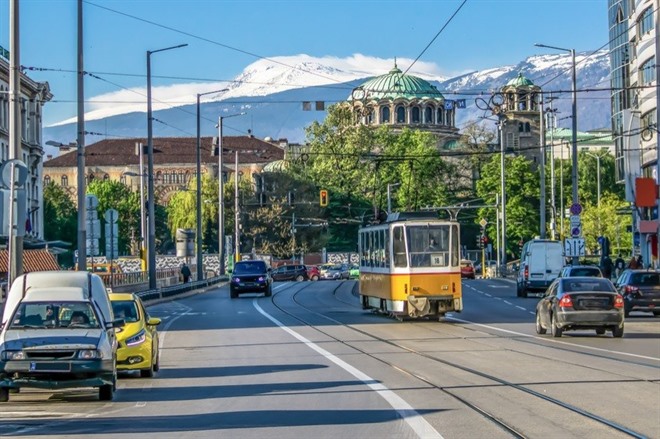
This morning enjoy some free time in Plovdiv before driving to Sofia, a modern, youthful Eastern European capital, distinguished by a unique combination of communist-style architecture, Ottoman mosques and onion-domed churches. The home to many of Bulgaria's finest museums, galleries and restaurants, Sofia will reveal to you its most interesting landmarks, such as the impressive Saint Alexander Nevsky Cathedral, the colourful Church of Saint Nicholas the Miracle-Maker, the Ivan Vazov National Theatre, the Church of Saint George, the Banya Bashi Mosque, the Sofia Synagogue, the National Palace of Culture and Largo- one of the prime examples of Socialist Classicism architecture and one of the Sofia's main landmarks. (B)
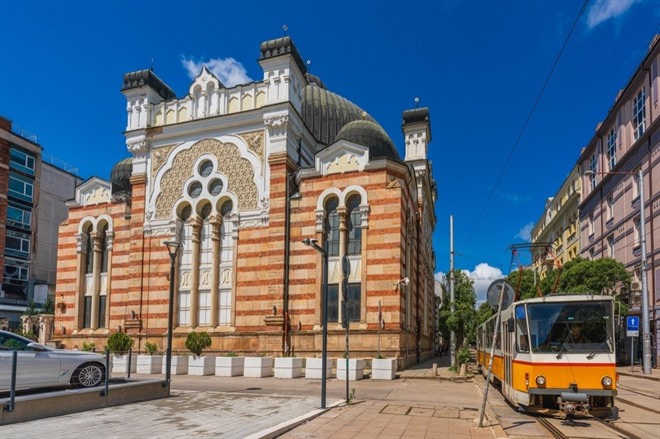
Transfer to the airport for your flight back to the UK. (B)
Pricing Information
Price Includes
- Return international flights from the UK to the Balkans
- All airport taxes and security charges
- Accommodation in four-star hotels on B&B basis
- Services of an English speaking guide throughout
- Transportation in an air-conditioned minibus
- Sightseeing tours as specified in the itinerary
- Entrance fees on sightseeing tours
- Airport transfers
- Daily water
Price Excludes
- Tips & gratuities
- Additional meals
- Optional excursions - available to book locally
Price Includes
Price Excludes
Price Notes
This tour operates with a minimum of 1 and a maximum of 24 passengers. These are guaranteed departure tours operated in conjunction with our Balkan partners and are not exclusive to Regent Holidays’ clients. Please note that our local partners reserve the right to change hotels to similar hotels of the same standard.
Please speak to our Balkan specialists about upgrading your hotels
| Itinerary Dates | |
|---|---|
|
05 Sep 2025
-
16 Sep 2025
|
|
|
19 Sep 2025
-
30 Sep 2025
|
|
|
03 Oct 2025
-
14 Oct 2025
|
|
|
17 Oct 2025
-
28 Oct 2025
|
|
|
28 Mar 2026
-
08 Apr 2026
|
|
|
17 Apr 2026
-
28 Apr 2026
|
|
|
08 May 2026
-
19 May 2026
|
|
|
29 May 2026
-
09 Jun 2026
|
|
|
12 Jun 2026
-
23 Jun 2026
|
|
|
03 Jul 2026
-
14 Jul 2026
|
|
|
24 Jul 2026
-
04 Aug 2026
|
|
|
14 Aug 2026
-
25 Aug 2026
|
|
|
04 Sep 2026
-
15 Sep 2026
|
|
|
18 Sep 2026
-
29 Sep 2026
|
|
|
02 Oct 2026
-
13 Oct 2026
|
|
|
16 Oct 2026
-
27 Oct 2026
|
Tour Route Map
- Serbia, Belgrade
- Serbia, Novi Sad
- Romania, Timisoara
- Romania, Sibiu
- Romania, Sighisoara
- Romania, Brasov
- Romania, Bucharest
- Bulgaria, Arabanassi
- Bulgaria, Veliko Tarnovo
- Bulgaria, Plovdiv
- Bulgaria, Rila
- Serbia, Nis
- Serbia, Belgrade

